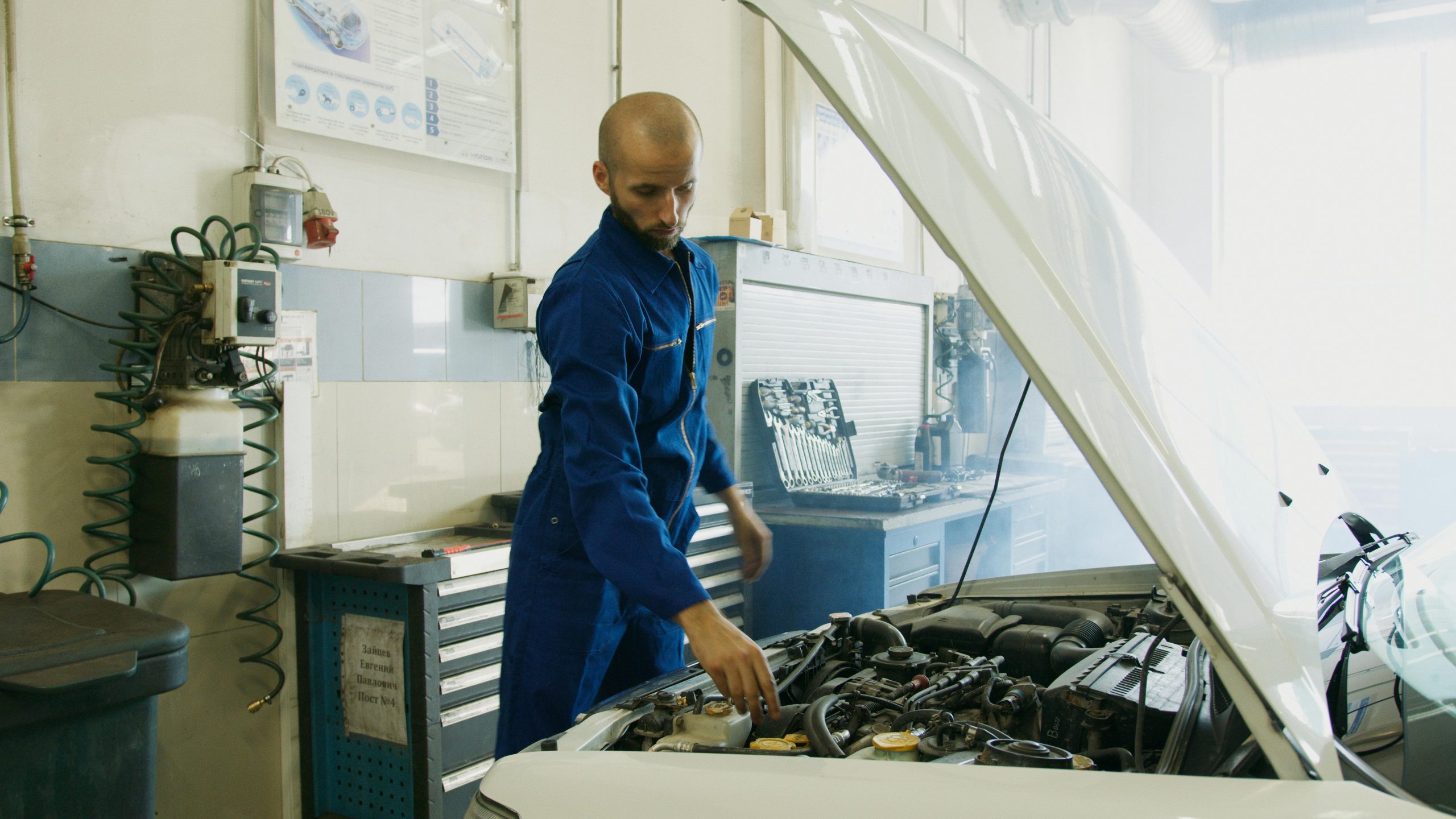Highlights
- Regular cleaning and maintenance prevent corrosion and improve battery longevity.
- Proper charging practices, including the use of smart chargers, reduce overcharging or undercharging.
- Monitoring water levels and preventing parasitic drains ensures optimal battery performance.
- Temperature control and safe storage protect batteries from extreme heat and cold.
- Periodic testing and timely replacement prevent unexpected failures.
- Upgrading to AGM or lithium batteries can provide longer life and better performance.
- Working with a shop that carries both car and marine batteries ensures proper installation and professional guidance.

Car and marine batteries are the unsung heroes of vehicles and boats, providing the power necessary for starting engines, running electronics, and supporting essential systems. However, these batteries are not indestructible. A neglected battery can leave you stranded on the road or out on the water, causing frustration and potential safety risks. Extending the life of your battery is not only cost-effective but also ensures reliability in critical moments.
The differences between car and marine batteries can influence how you care for them. Automotive batteries are designed primarily for high-current bursts to start engines, while marine batteries, particularly deep-cycle types, are built to provide steady power over extended periods for running trolling motors, electronics, and other onboard equipment. By understanding these distinctions and following best practices for maintenance, charging, and storage, you can maximize battery life and performance. This article provides actionable, practical tips to keep both car and marine batteries in peak condition.
1. Understand Your Battery Type
Not all batteries are created equal. Choosing the right care strategy starts with knowing your battery type. Car batteries are designed to deliver a short, high-current burst to start the engine. These are known as starting or cranking batteries. Marine batteries, especially deep-cycle types, are meant to discharge slowly over time to power accessories and motors. Dual-purpose batteries can handle both starting and deep cycling, making them versatile for certain boats and RVs.
Tips for identifying your battery type:
- Starting batteries: Check for a high Cold Cranking Amp (CCA) rating. Ideal for cars and trucks.
- Deep-cycle batteries: Look for an Amp-Hour (Ah) rating and thick plates, suitable for marine and solar applications.
- Dual-purpose batteries: Offers moderate CCA and deep-cycle capabilities; perfect for small boats and hybrid vehicles.
Understanding your battery type ensures proper usage and prevents damage caused by using a battery outside its design parameters.
2. Keep Batteries Clean and Dry
Dirt, salt, and moisture can all contribute to battery corrosion, which weakens electrical connections and reduces battery efficiency. Regular cleaning keeps your battery terminals free of build-up and ensures a steady flow of electricity.
Maintenance tips:
- Clean terminals with a mixture of baking soda and water to neutralize acid.
- Apply a thin coat of petroleum jelly or a commercial terminal protector to prevent corrosion.
- Check for cracks, bulges, or leaks in the battery casing; replace if necessary.
- For marine batteries, rinse off any salt residue after exposure to water.
By keeping batteries clean and dry, you prevent surface corrosion and extend the life of both car and marine batteries.
3. Proper Charging Practices
Correct charging is essential to battery longevity. Overcharging can lead to overheating and plate damage, while undercharging causes sulfation, reducing the battery’s ability to hold a charge.
Best practices:
- Use a smart charger that automatically adjusts voltage to prevent overcharging.
- Charge marine batteries after each use to restore full capacity.
- Avoid leaving a battery in a discharged state, especially for long periods.
- For lithium or AGM batteries, ensure your charger is compatible with the battery type.
Regular, careful charging prevents premature failure and helps maintain consistent performance.
4. Monitor and Maintain Water Levels
Flooded lead-acid batteries require careful attention to water levels, as electrolyte evaporation can reduce capacity and damage the battery. Neglecting water levels is one of the most common reasons for early battery failure.
Maintenance steps:
- Use distilled water only to refill cells; tap water contains minerals that can harm the battery.
- Check water levels monthly, especially for batteries that see frequent use or extreme conditions.
- Avoid overfilling, as this can cause acid overflow and corrosion.
Keeping water levels correct ensures proper chemical reactions inside the battery, maximizing lifespan.
5. Reduce Parasitic Drains and Overuse

Even when not in use, batteries can slowly lose power due to parasitic drains from electronics, lights, and other systems. Minimizing these drains protects your battery’s health.
Tips to minimize drains:
- Turn off all lights, electronics, and accessories before leaving the vehicle or boat.
- Disconnect the battery during long-term storage to prevent slow discharge.
- Use energy-efficient devices and accessories where possible.
- Consider a solar maintainer or trickle charger for boats during off-season storage.
Reducing unnecessary energy usage keeps your battery charged and ready for use when you need it most.
6. Maintain Optimal Temperature
Temperature has a significant impact on battery life. Heat accelerates chemical reactions, which can lead to increased corrosion and fluid evaporation. Cold temperatures slow down reactions, reducing starting power.
Temperature management tips:
- Store batteries in a temperature-controlled environment if possible.
- Use insulated battery boxes for boats and vehicles in cold climates.
- Avoid placing batteries near engines, radiators, or direct sunlight.
- During winter, fully charge and disconnect batteries for safe storage.
Maintaining moderate temperatures prevents unnecessary strain and keeps batteries functional across seasons.
7. Regular Testing and Monitoring
Monitoring your battery’s health allows you to address problems before they cause failure. Simple tests can identify declining performance and prevent being stranded.
Testing tips:
- Use a multimeter to check voltage; a fully charged battery should read around 12.6V (12.7–12.8V for AGM).
- Check Cold Cranking Amps (CCA) for car batteries during winter months.
- Use a hydrometer for flooded batteries to verify electrolyte levels.
- Replace batteries older than 4–5 years or showing repeated low voltage readings.
Regular testing ensures reliability and helps plan timely replacement before unexpected failure.
8. Safe Storage for Off-Season
For vehicles and boats that are not in use, proper battery storage is essential. Poor storage can lead to sulfation, permanent capacity loss, and shorter battery life.
Storage tips:
- Fully charge batteries before storing.
- Store batteries off concrete floors to prevent slow discharge.
- Disconnect batteries from boats and cars if they will be idle for extended periods.
- Check and recharge periodically to maintain charge.
Safe storage keeps your battery healthy and ready for the next season.
9. Upgrade Options for Longevity
Sometimes, replacing your old battery with a more advanced type is more cost-effective than repeated maintenance. AGM and lithium batteries offer superior longevity and performance compared to traditional flooded lead-acid batteries.
Upgrade considerations:
- AGM batteries: Maintenance-free, vibration-resistant, and ideal for marine use.
- Lithium batteries: Lightweight, high-capacity, long cycle life, and excellent for vehicles with high electrical demands.
- Evaluate cost vs. long-term savings: fewer replacements and maintenance may offset the initial higher price.
Upgrading can reduce long-term hassle and increase reliability.
10. Work With a Trusted Supplier
Purchasing quality batteries and getting professional installation helps ensure maximum performance. A shop that carries both car and marine batteries can provide expert guidance for selection, installation, and maintenance.
Tips for working with a supplier:
- Choose a reputable shop with knowledgeable staff.
- Ensure proper installation to prevent loose connections and corrosion.
- Ask about warranties and recommended maintenance.
- Seek advice on battery selection based on vehicle or boat usage.
Professional support helps extend battery life and gives peace of mind.
Conclusion
Extending the life of your car and marine batteries requires consistent care, proper usage, and proactive maintenance. By understanding battery types, keeping terminals clean, practicing safe charging, monitoring water levels, reducing parasitic drains, and maintaining temperature control, you can significantly improve longevity. Regular testing and safe off-season storage further protect your investment, while upgrading to advanced battery types can provide additional benefits. Working with a trusted supplier ensures correct installation and professional guidance, reducing the risk of premature battery failure.
By implementing these practical strategies, your batteries will perform reliably, last longer, and save you both time and money.